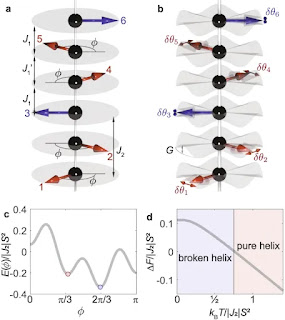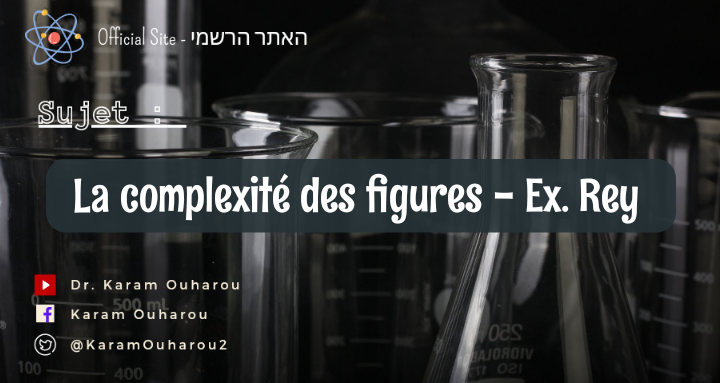Navigating the Enigmatic Realm of Unconventional Magnetic Order within Potential Axion Insulators Utilizing the Profound Tool of Resonant Elastic X-ray Scattering
Introduction :
Magnetic topological insulators and semimetals are a class of crystalline solids whose properties are strongly influenced by the coupling between non-trivial electronic topology and magnetic spin configurations. Such materials can host exotic electromagnetic responses. Among these are topological insulators with certain types of antiferromagnetic order which are predicted to realize axion electrodynamics. Here we investigate the highly unusual helimagnetic phases recently reported in EuIn2As2, which has been identified as a candidate for an axion insulator. Using resonant elastic x-ray scattering we show that the two types of magnetic order observed in EuIn2As2 are spatially uniform phases with commensurate chiral magnetic structures, ruling out a possible phase-separation scenario, and we propose that entropy associated with low energy spin fluctuations plays a significant role in driving the phase transition between them. Our results establish that the magnetic order in EuIn2As2 satisfies the symmetry requirements for an axion insulator.
understand the underlying mechanism driving the symmetry lowering of the magnetic order from the pure to broken helix. Such a mechanism has not yet been proposed.
In this work, we report how the magnetic structure of EuIn2As2 evolves as a function of temperature and magnetic field by means of resonant elastic x-ray scattering (REXS). We not only confirm the pure and broken helix magnetic phases in EuIn2As2, but also find that the Eu magnetic structure is commensurate at all temperatures in zero magnetic field and show that the phase-separated model can be excluded. Furthermore, we propose a minimal model which can explain the transition in the magnetic order from pure helix into broken helix. Finally, we determine how the broken helix structure evolves as a function of an in-plane magnetic field.
Temperature dependence
Figure 1 a plots the REXS intensity measured at a temperature of T = 6 K along the (00L) direction in reciprocal space. An identical scan measured in the paramagnetic phase at T = 20 K has been subtracted to isolate the magnetic signal. The scans show peaks at integer and non-integer L. The non-integer peaks are found at (0, 0, L) ± k1, with L an even integer and k1 = (0, 0, 0.3328(6)). To within experimental error, these peaks are consistent with a commensurate magnetic propagation vector k1=(0,0,13)�1=(0,0,13). The integer peaks belong to a family of 00L reflections with odd integer L giving a second magnetic propagation vector k2 = (0, 0, 0). The two propagation vectors were reported previously in Ref., but in that study an incommensurate k1 = (0, 0, 0.303(1)) was found. The distinction between a commensurate and an incommensurate k1 is important because only a commensurate k1 can satisfy the C2 × T symmetry needed for the axion insulator phase.
Abstract:
The search for novel materials that can host exotic physical phenomena has driven significant advancements in the field of condensed matter physics. One such intriguing area of study involves the investigation of unconventional magnetic order in candidate axion insulators using resonant elastic X-ray scattering. This article delves into the fundamental concepts surrounding axion insulators, unconventional magnetic order, and the role of resonant elastic X-ray scattering in unraveling the mysteries of these materials. By exploring recent research, experimental methodologies, and theoretical frameworks, we aim to shed light on the profound implications of understanding unconventional magnetic order in candidate axion insulators.
Introduction:
Axion insulators are a class of materials that have attracted attention due to their potential to host axion particles, which are hypothetical elementary particles that could solve the strong CP problem in quantum chromodynamics. These materials exhibit intriguing properties arising from their unique electronic band structure and magnetic interactions. Unconventional magnetic order in axion insulators introduces a fascinating avenue of exploration that could lead to the discovery of new physical phenomena and applications. Resonant elastic X-ray scattering has emerged as a powerful technique for probing the electronic and magnetic structures of such materials, providing valuable insights into their behavior.
Axion Insulators and Unconventional Magnetic Order:
Axion insulators are characterized by their nontrivial band topology and strong spin-orbit coupling, resulting in topological surface states and bulk band gaps. The interplay between these features can give rise to unconventional magnetic order, such as various forms of multipolar ordering or topologically protected magnetic textures. These exotic magnetic configurations can have significant implications for emergent phenomena, such as the quantum anomalous Hall effect and axion electrodynamics.
Resonant Elastic X-ray Scattering:
Resonant elastic X-ray scattering (REXS) is a cutting-edge experimental technique that enables researchers to probe the electronic and magnetic structures of materials with high precision. By exploiting the resonant enhancement of X-ray scattering at specific photon energies, REXS provides detailed information about the distribution of magnetic moments, orbital ordering, and charge density waves in materials. This technique is particularly well-suited for studying complex systems with unconventional magnetic order, such as axion insulators.
Recent Research and Findings:
Recent studies have utilized REXS to investigate the unconventional magnetic order in candidate axion insulators. Researchers have observed novel magnetic textures and multipolar orderings that are driven by the interplay between topology, spin-orbit coupling, and electronic correlations. These findings have opened up new avenues for understanding the underlying physics of axion insulators and their potential applications in quantum technologies.
Theoretical Frameworks and Modeling:
Theoretical approaches, such as density functional theory (DFT) calculations and model Hamiltonians, play a crucial role in interpreting REXS data and providing insights into the origin of unconventional magnetic order. These frameworks help researchers understand the interplay between electronic band structure, magnetic interactions, and topological properties, guiding the design of experiments and the exploration of novel phenomena.
Implications and Future Directions:
Understanding unconventional magnetic order in candidate axion insulators has far-reaching implications for both fundamental physics and technological applications. The manipulation and control of exotic magnetic configurations could lead to the development of new quantum devices, enhanced spintronic technologies, and improved energy-efficient electronics. Moreover, the insights gained from studying these materials may shed light on the nature of axion particles and advance our understanding of particle physics.
Conclusion:
The study of unconventional magnetic order in candidate axion insulators using resonant elastic X-ray scattering represents a frontier of research at the intersection of condensed matter physics, materials science, and particle physics. Through a combination of experimental advancements, theoretical insights, and innovative modeling techniques, researchers are unraveling the mysteries of these materials and paving the way for transformative discoveries in both fundamental science and technological applications.
Data availability
The data presented in this study have been deposited in a Zenodo repository at https://doi.org/10.5281/zenodo.7949497.


Comments